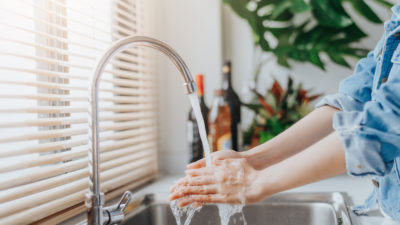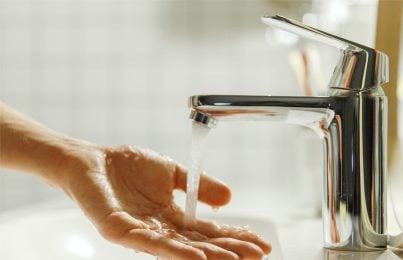What are your thoughts about Winterizing Your Pipes?

All property owners who live in pleasant environments should do their finest to winterize their pipes. Failure to do so can lead to disaster like icy, split, or burst pipes.
Activate the Faucets
When the temperature level declines and it appears as if the cold temperature level will certainly last, it will help to switch on your water both inside your home as well as outdoors. This will keep the water streaming through your plumbing systems. Furthermore, the movement will reduce the freezing procedure. Significantly, there's no requirement to turn it on full force. You'll end up throwing away gallons of water in this manner. Instead, go for concerning 5 drops per min.
Open Cabinet Doors Hiding Plumbing
When it's cold outside, it would be practical to open up cabinet doors that are masking your pipelines. Doing this tiny technique can maintain your pipelines warm as well as restrict the potentially unsafe results of freezing temperature levels.
Take Time to Wrap Exposed Pipes
One very easy and also cool hack to heat up icy pipelines is to cover them with cozy towels. You can cover them first with towels. After safeguarding them in place, you can pour boiling water on the towels. Do it gradually to allow the towels soak up the fluid. You can additionally utilize pre-soaked towels in hot water, just don't forget to wear safety gloves to guard your hands from the warmth.
Try a Hair Dryer or Heat Gun
When your pipelines are almost freezing, your trusty hair clothes dryer or warmth gun is a godsend. If the warm towels do not aid remove any type of resolving ice in your pipelines, bowling hot air straight right into them may assist. You might end up destructive your pipes while attempting to thaw the ice.
Shut Off Water When Pipes are Frozen
Turn off the main water shutoff right away if you discover that your pipelines are entirely icy or almost nearing that stage. You will normally locate this in your basement or utility room near the heater or the front wall surface closest to the street. Turn it off today to stop further damage.
Don't neglect to shut external water resources, also, such as your connection for the yard home. Doing this will certainly stop added water from filling out your plumbing system. However, with even more water, more ice will certainly pile up, which will eventually cause break pipelines. It is best to call a professional plumber for an assessment if you are unclear concerning the state of your pipelines this winter season. Taking this positive technique can conserve you hundreds of dollars in repairs.
All homeowners who live in pleasant climates must do their best to winterize their pipelines. Failing to do so can lead to disaster like icy, broken, or ruptured pipelines. If the hot towels do not aid displace any kind of clearing up ice in your pipes, bowling warm air directly right into them may assist. Transform off the main water valve quickly if you see that your pipelines are entirely frozen or nearly nearing that phase. With more water, more ice will certainly pile up, which will ultimately lead to break pipes.
PREVENT YOUR PIPES FROM FREEZING THIS WINTER
A Leading Cause of Property Damage
When the weather is taking a deep nose dive into the cold dreary days, the risk of your pipes freezing and potentially bursting skyrockets. Unfortunately, during these cold dreary months, burst pipes are the most common denominator for property damage. The pipes that are most at the risk are those that are in areas where it is most cold in your home. For instance, pipes located in interior places such as basements, attics, and your garage. Unfortunately, that doesn’t mean that the pipes running through your cabinets or exterior walls can’t freeze. Good news, however, is that you can do things to help prevent pipes from freezing.
How to Prevent Pipes From Freezing
Once the temperature starts to drop during the winter, you should be taking the proper measures needed to ensure that your pipes stay warm and that there is circulation of water through them. Some steps that experts may recommend could go against your better judgement when it comes to saving water and heat. However, it would go without saying that when expenses are compared, damaged pipes could put a bigger dent in your wallet than a water bill.
What Can I Do?
- Keep your garage door closed. This is very important, especially if you have water supply lines running through your garage.
- Open your kitchen and bathroom cabinets to allow warm air to circulate through them.
- Allow air circulation throughout your home. Keeping the interior doors open will once again allow the warm air to circulate inside your home.
- Ensure your thermostat is running the same temperature throughout the night and day.
- If you plan to be away from home during the cold months, set your temperature no lower than 55° F. This should provide enough heat to keep the pipes warm and prevent any remaining water inside the pipes from freezing.
- For more of a long-term solution, add insulation to attics, basement, and other crawl spaces around your home.
- By allowing your faucet to drip, it will alleviate pressure in the system. This is important because the pressure that is created between the blockage and the faucet can potentially cause the pipes to burst. Allowing the faucet to drip will prevent the pressure from building up, therefore keeping the pipes from bursting.
- Seal any cracks, openings, and crawl spaces around your home to prevent cold air from coming inside. This keeps your pipes-not to mention your home-warmer and less susceptible to issues caused by freezing temperatures.
- For the pipes in your home that are easily accessible, applying electrical tape to them might prevent them from freezing over. This is a quick fix, as you can apply the tape directly to the pipe. There are two options for heating tapes. One turns on and off by itself when it senses heat is needed. The other type of heating tape needs to be applied when heat is needed and removed when not necessary. If you have exposed pipes in your home, you can check this website to take a look at a few options that would be available at a shop near you.

Do you enjoy reading up on Prevent Freezing and Bursting Pipes? Give a remark down the page. We'd be delighted to hear your reactions about this post. We are looking forward to see you back again in the near future. Sharing is good. Helping people is fun. Thank-you for going through it.
Click Here
Comments on “How to Winterize Your Plumbing: 5 Hacks to Prevent Bursting Pipes in Frigid Temperatures”